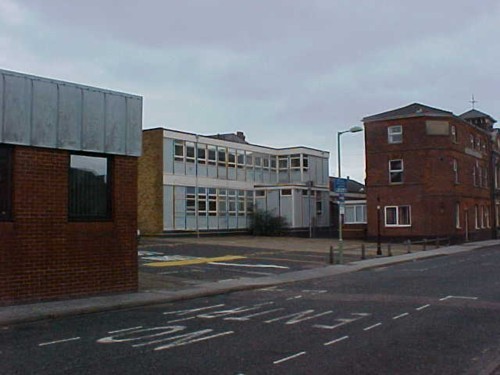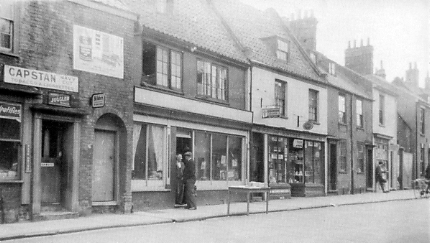MR. JOHN SOAN
LANDOWNER AND FARMER
(NB: The published Trial Report records this witnesses name as "John SOAM" . However we have been able to reliably identify him as a Yeoman Farmer named John SOAN or SOANE).
John Soan was not born in Lowestoft and it seems probable that he originated from one of the nearby parishes, possibly Beccles or Somerleyton where the surname is very common.
Described in the Trial Report as a "Yeoman" and a "sufficient person" his name first appears in the Lowestoft records with his marriage to a widow named Jean Robinson. Jean was the widow of an Husbandman named William Robinson, probably born in Lowestoft in 1576, the son of Robert and Ann Robinson. Jean and William's marriage is not recorded in the Lowestoft parish registers so in all probability she was born and lived elsewhere at the time.
After their marriage the Robinsons' settled in Lowestoft and produced eight children, the first of which was born their in March 1614. William Robinson died and was buried at Lowestoft in September 1630; two months later his widow gave birth to their eighth child who she named William.
During the following three years she obviously met John Soan and they were married on August 15th 1633. To the marriage she brought six of her surviving children, three of whom would die two years later in the outbreak of "plague" that swept through the town in the summer/autumn of 1635. John and jean appear not to have produced offspring of their own. She also probably brought to the marriage a decent inheritance.
The Ship Money returns for 1639-40 show that Soan possessed about 126 acres of land, a quite substantial holding and that unlike many of the other witnesses in the trial his income was derived from farming rather than fishing. During the 1650's he was the largest contributor to the town poor rate which was based on land holdings. His farmhouse and stackyard were located in a narrow lane leading from High Street to the fields to the west of the town. It was very close to Francis Ewen's house and brewery in which Ann Landefielde was born and only a short walk from the house in which Rose Cullender lived from 1641 until her untimely death in 1662. The farmhouse was presumably quite substantial as it contained four hearths.
The site of John Soan's farmhouse and stackyard in Compass Street. The exact site is now covered by the car park of the Town Hall, which can be seen in the background. Although a "settler" in Lowestoft he seems soon to have established himself amongst the leading townsmen. In 1649, together with Samuel Pacy and 22 other prominent and "most sufficient" men, he was made a Trustee of the Lowestoft Townlands a position that he was still holding in 1680. That same year, again with Samuel Pacy, he became a Churchwarden of the parish. The following year and in ensuing years he became a "Chief Pledge" or juror at the monthly Manor Court. He together with Samuel Pacy was one of seven townsmen to sign a petition asking for cannon to protect the town in 1663 and again in 1665. He also signed another petition in 1670 regarding Lowestoft's fishing rights.
His wife Jean died at Lowestoft in November 1656. Her burial entry in the Parish Register reads "Mrs. Soane the wife of Mr. John Soane". The titles "Mr" and "Mrs." are very unusual and are a sure indication of his status in Lowestoft. In all probability John married again for although there is no record of a second marriage at Lowestoft the parish registers record the baptism of a son of John Soan and Elizabeth his wife. He eventually sold the property to a local brewer in 1683.
In 1657 after the death of his wife he inherited by way of her first marriage a public house called the "Sun". This was situated in Blue Anchor Lane next door to house in which Rose Cullender and her family lived in the 1630s.
Blue Anchor Lane (in modern times called "Dukes Head Street"). It was here that the "Sun Inn" was located. Although of these properties have now been demolished and a modern road system covers the site. His name appears many times in the Manor Court Baron proceedings, usually as the plaintiff. In the autumn and winter of 1646 he filed a suit against one John Denny, probably the husband of Amy Denny though, as in all these cases, no details are provided in the records of what the dispute involved.
Soan had enough money to lend some and in January 1660 one Henry Ward mortgaged his public house "The White Horse" to him and two years later Soan, who presumably had foreclosed, sold the property.
He died at Lowestoft in 1689. The burial entry reads: "October 22nd - Mr. John Soan - an ancient man". The location of his grave is not known today.
Although John Soan made damning accusations against Rose Cullender at the trial his name does not appear on any indictments and it is difficult to understand why such a "learned" judge as Matthew Hale permitted such evidence which was not pertinent to any formal accusation!

